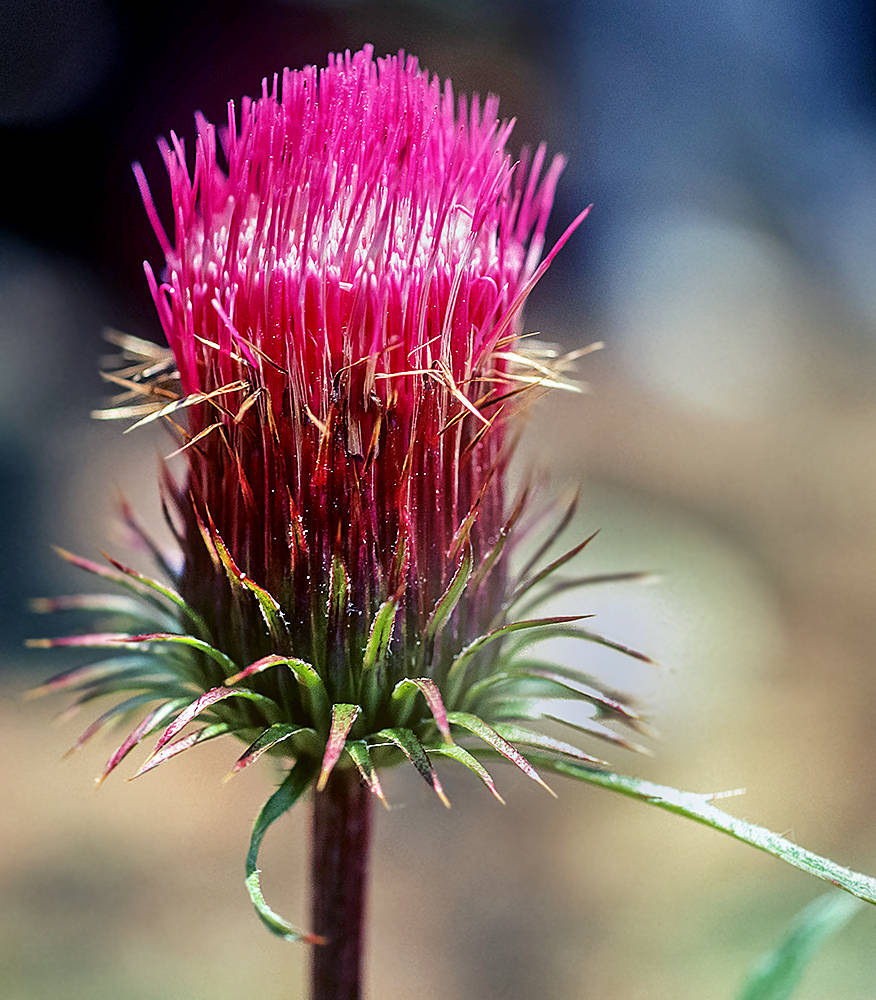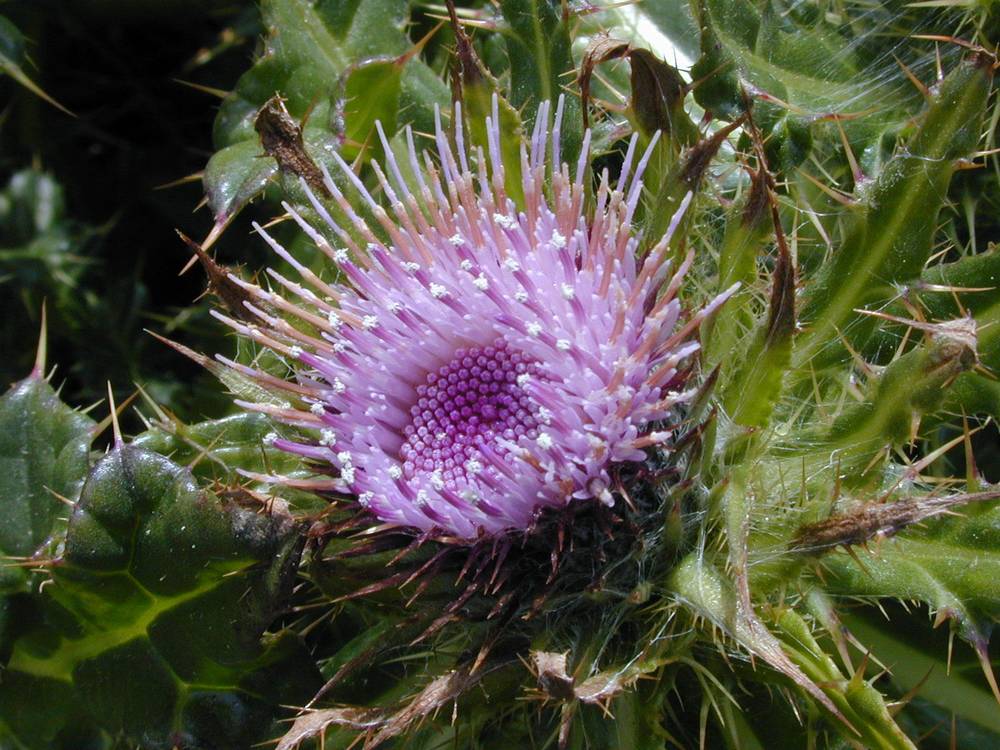Cirsium andersonii
Cirsium edule
Anderson's thistle
edible thistle
usually 1, sparsely arachnoid-tomentose to glabrate.
usually 1, sparsely to densely arachnoid-villous.
elliptic to linear-oblong, 8–20(35) × 2–8 cm, gradually reduced above;
margins coarsely dentate or 1–2-pinnate;
spines 1–5 mm;
surfaces abaxially ± thinly gray-tomentose, adaxially glabrous to sparsely pilose;
basal usually present at flowering, clasping to petiolate.
oblong to oblanceolate, 5–50 × 1–10 cm;
margins entire, sometimes undulate, coarsely dentate to deeply pinnate;
spines 2–10 mm;
surfaces abaxially sparsely glabrate to arachnoid-tomentose, adaxially glabrate to sparsely villous, often villous along veins;
basal usually absent at flowering, sessile, clasping, or petiolate.
broadly cylindric to narrowly campanulate, 3–5 × 2–4 cm, glabrous to thinly tomentose.
narrowly ovoid to hemispheric or campanulate, 1.5–4 × 1.5–4 cm, thinly to densely arachnoid-tomentose.
corollas 30–45 mm, red, occasionally red-purple;
tubes 10–20 mm;
throats abruptly narrowed to tubes, 10–16 mm;
lobes 9–11 mm;
styles conspicuously exserted;
tips 3.5–5 mm, sometimes geniculate.
corollas 14–22 mm, purple to pink, rarely white;
tubes 7–11 mm;
throats 4–8 mm;
lobes (2)4–7 mm;
styles conspicuously exserted;
tips 3–4 mm.
without glutinous ridges;
spines weak, 1–3 mm; outer short, linear-lanceolate, appressed;
margins entire or spiny-ciliate;
tips long-acuminate; inner linear; long; entire;
tips red to purple; flat.
without glutinous ridges;
spines slender, 1–15 mm; outer bases < 2 mm wide.
6–7 mm, brown;
pappi 25–40 mm.
3.5–6.5 mm; light to dark brown;
pappi 10–25 mm.
1–6 per branch;
lateral heads widely spaced along distal portions of branches.
1–many.
Cirsium andersonii
Cirsium edule
Open grasslands, montane woodlands. Flowering Jul–Sep. 1500–2500 m. ECas. CA, NV. Native.
Cirsium andersonii, while currently rare in Oregon, is well documented in northern California and Nevada.
Northwestern North America. 3 varieties; 2 varieties treated in Flora.
Cirsium edule is known to form fertile hybrids with Cirsium remotifolium where their ranges overlap.
Bridget Chipman
Bridget Chipman





